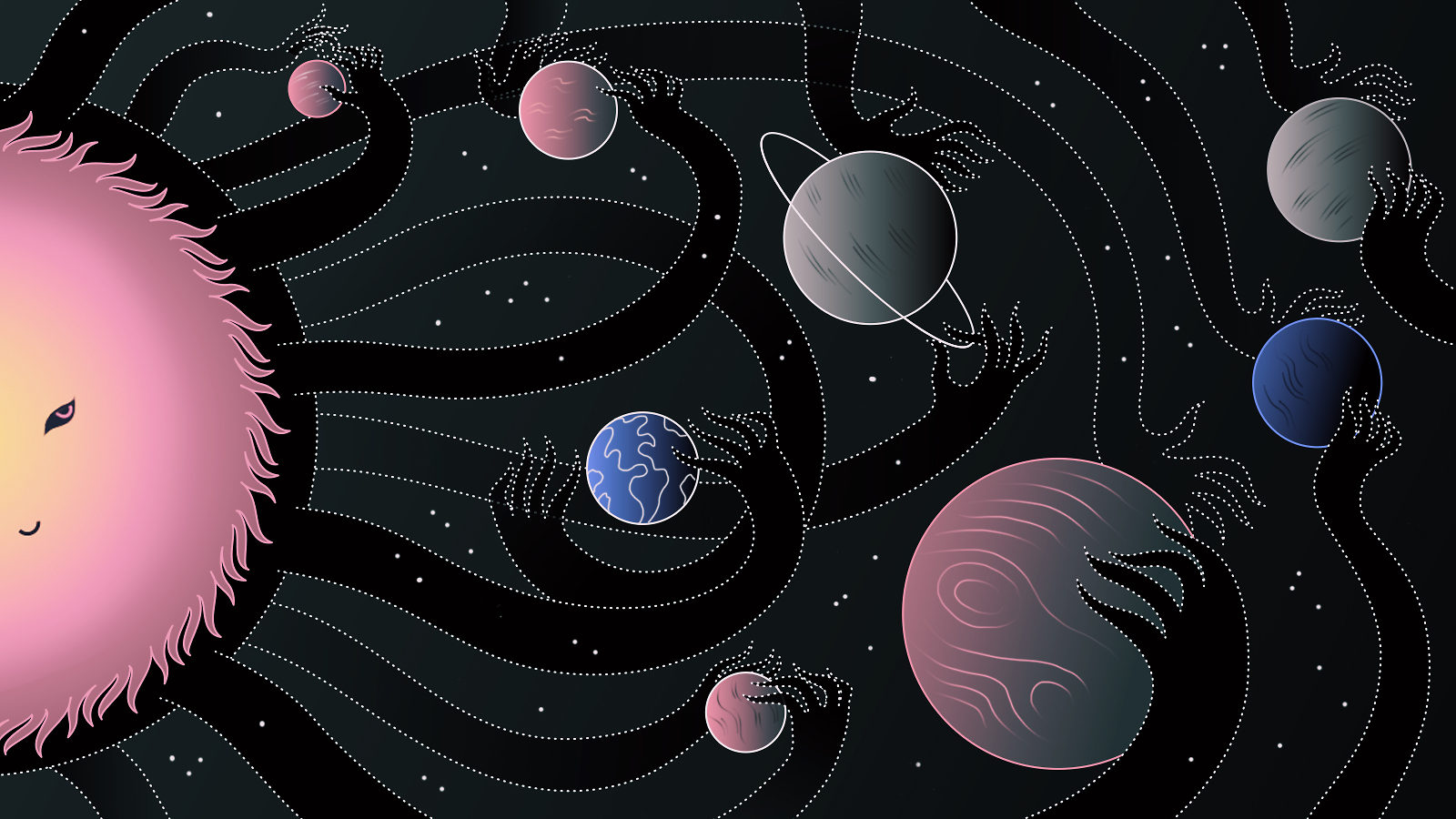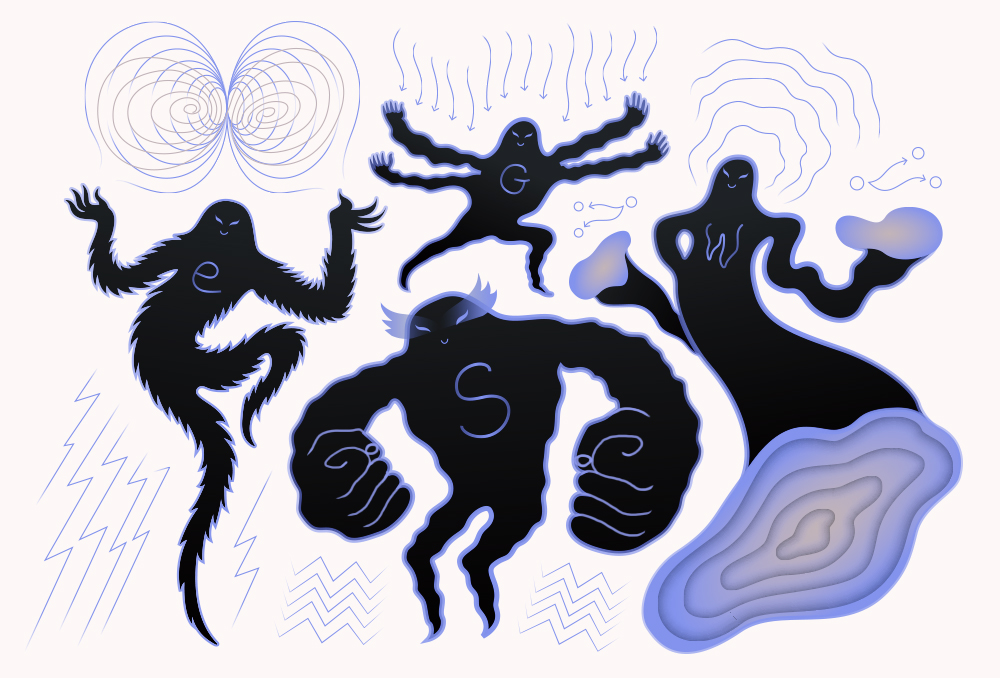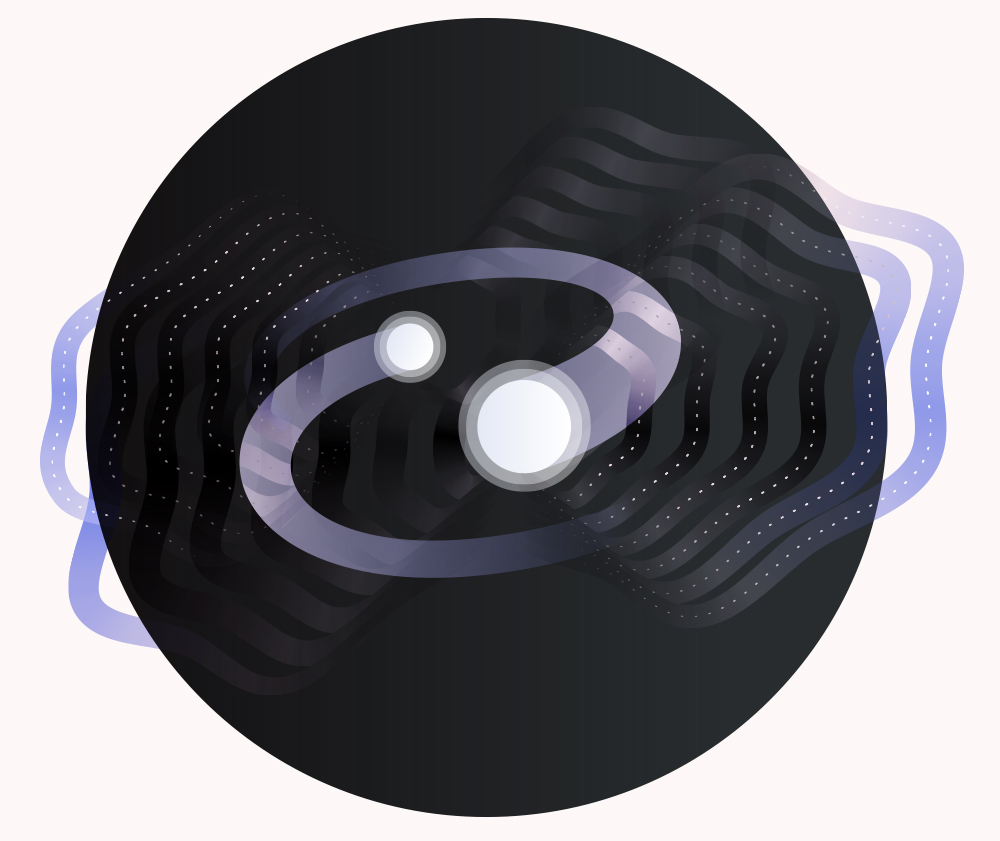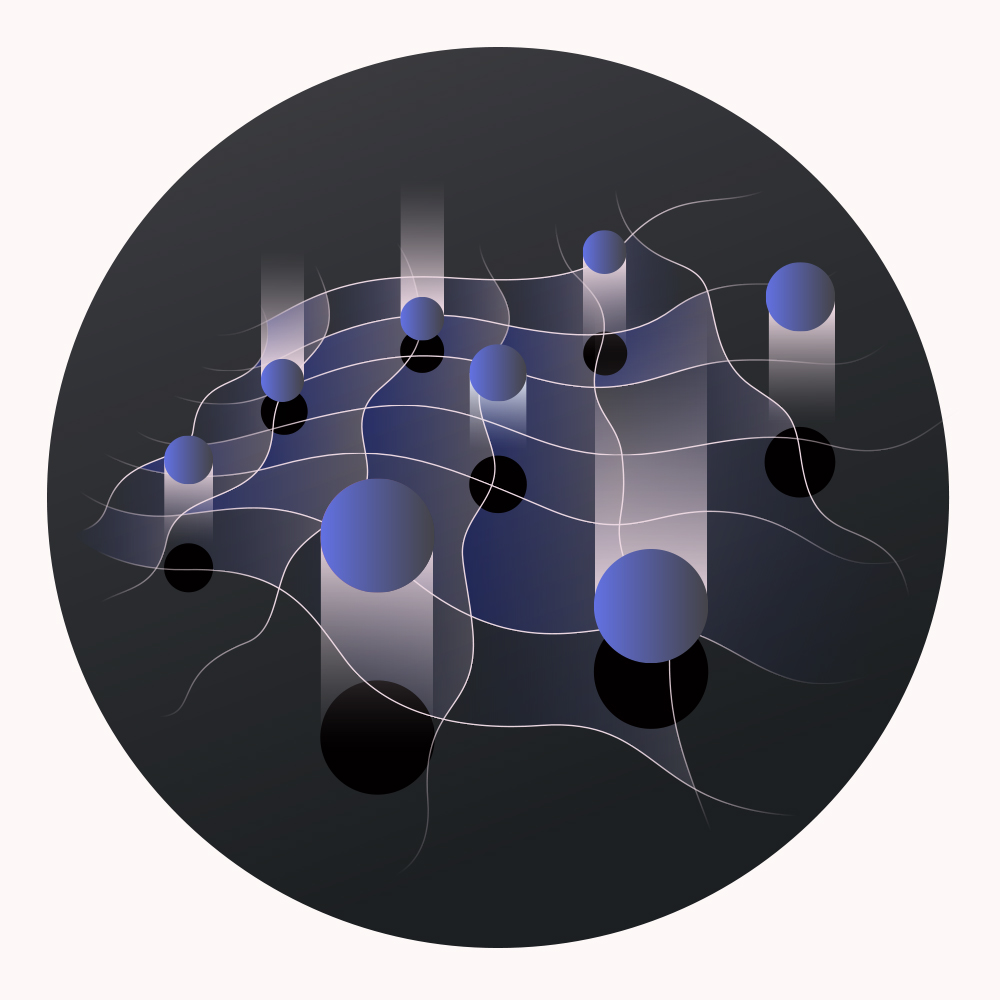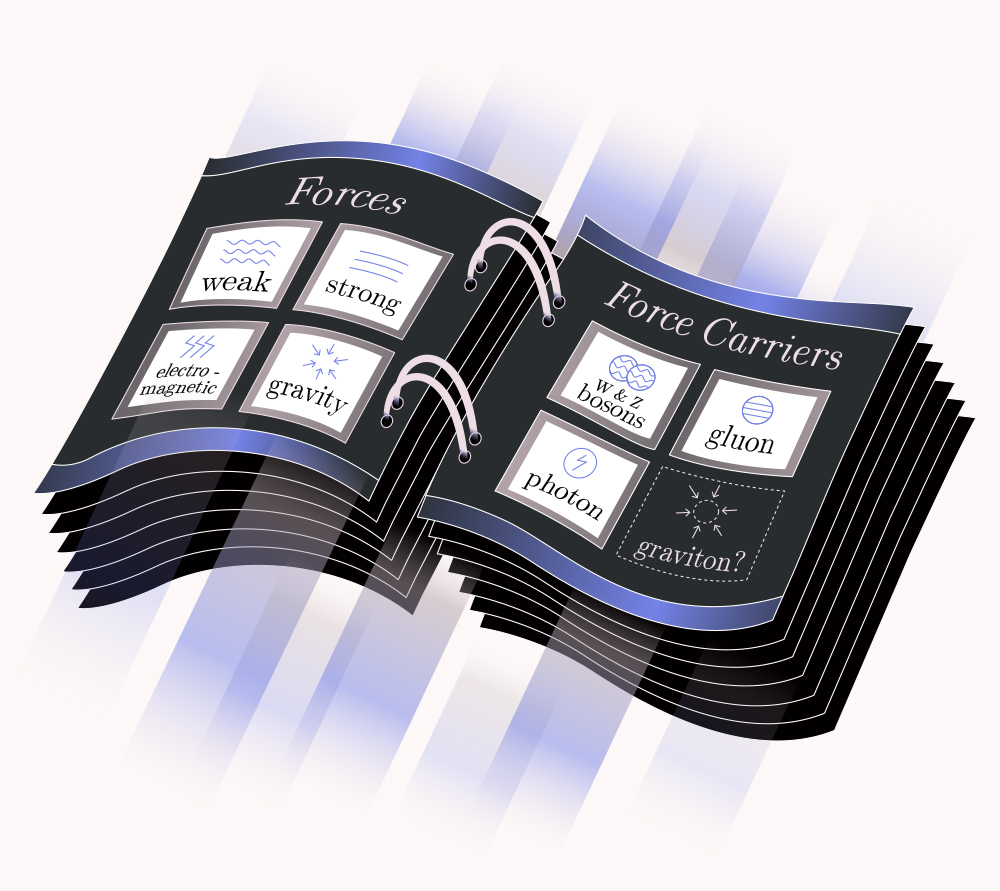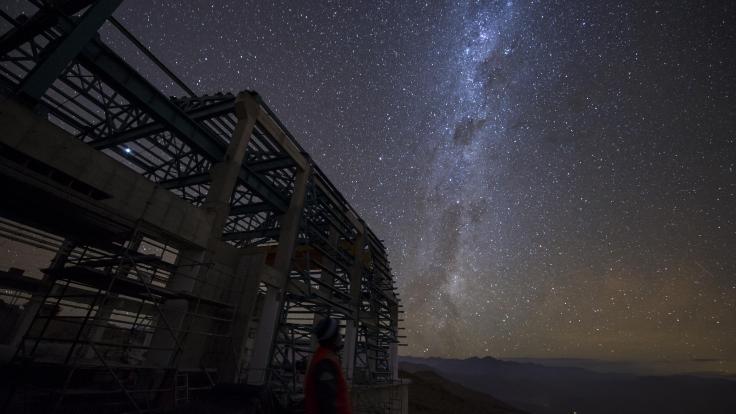Gravity: we barely ever think about it, at least until we slip on ice or stumble on the stairs. To many ancient thinkers, gravity wasn’t even a force—it was just the natural tendency of objects to sink toward the center of Earth, while planets were subject to other, unrelated laws.
Of course, we now know that gravity does far more than make things fall down. It governs the motion of planets around the Sun, holds galaxies together and determines the structure of the universe itself. We also recognize that gravity is one of the four fundamental forces of nature, along with electromagnetism, the weak force and the strong force.
The modern theory of gravity—Einstein’s general theory of relativity—is one of the most successful theories we have. At the same time, we still don’t know everything about gravity, including the exact way it fits in with the other fundamental forces. But here are six weighty facts we do know about gravity.
1. Gravity is by far the weakest force we know.
Gravity only attracts—there’s no negative version of the force to push things apart. And while gravity is powerful enough to hold galaxies together, it is so weak that you overcome it every day. If you pick up a book, you’re counteracting the force of gravity from all of Earth.
For comparison, the electric force between an electron and a proton inside an atom is roughly one quintillion (that’s a one with 30 zeroes after it) times stronger than the gravitational attraction between them. In fact, gravity is so weak, we don’t know exactly how weak it is.
2. Gravity and weight are not the same thing.
Astronauts on the space station float, and sometimes we lazily say they are in zero gravity. But that’s not true. The force of gravity on an astronaut is about 90 percent of the force they would experience on Earth. However, astronauts are weightless, since weight is the force the ground (or a chair or a bed or whatever) exerts back on them on Earth.
Take a bathroom scale onto an elevator in a big fancy hotel and stand on it while riding up and down, ignoring any skeptical looks you might receive. Your weight fluctuates, and you feel the elevator accelerating and decelerating, yet the gravitational force is the same. In orbit, on the other hand, astronauts move along with the space station. There is nothing to push them against the side of the spaceship to make weight. Einstein turned this idea, along with his special theory of relativity, into general relativity.
3. Gravity makes waves that move at light speed.
General relativity predicts gravitational waves. If you have two stars or white dwarfs or black holes locked in mutual orbit, they slowly get closer as gravitational waves carry energy away. In fact, Earth also emits gravitational waves as it orbits the sun, but the energy loss is too tiny to notice.
We’ve had indirect evidence for gravitational waves for 40 years, but the Laser Interferometer Gravitational-wave Observatory (LIGO) only confirmed the phenomenon in 2016. The detectors picked up a burst of gravitational waves produced by the collision of two black holes more than a billion light-years away.
One consequence of relativity is that nothing can travel faster than the speed of light in vacuum. That goes for gravity, too: If something drastic happened to the sun, the gravitational effect would reach us at the same time as the light from the event.
4. Explaining the microscopic behavior of gravity has thrown researchers for a loop.
The other three fundamental forces of nature are described by quantum theories at the smallest of scales— specifically, the Standard Model. However, we still don’t have a fully working quantum theory of gravity, though researchers are trying.
One avenue of research is called loop quantum gravity, which uses techniques from quantum physics to describe the structure of space-time. It proposes that space-time is particle-like on the tiniest scales, the same way matter is made of particles. Matter would be restricted to hopping from one point to another on a flexible, mesh-like structure. This allows loop quantum gravity to describe the effect of gravity on a scale far smaller than the nucleus of an atom.
A more famous approach is string theory, where particles—including gravitons—are considered to be vibrations of strings that are coiled up in dimensions too small for experiments to reach. Neither loop quantum gravity nor string theory, nor any other theory is currently able to provide testable details about the microscopic behavior of gravity.
5. Gravity might be carried by massless particles called gravitons.
In the Standard Model, particles interact with each other via other force-carrying particles. For example, the photon is the carrier of the electromagnetic force. The hypothetical particles for quantum gravity are gravitons, and we have some ideas of how they should work from general relativity. Like photons, gravitons are likely massless. If they had mass, experiments should have seen something—but it doesn’t rule out a ridiculously tiny mass.
6. Quantum gravity appears at the smallest length anything can be.
Gravity is very weak, but the closer together two objects are, the stronger it becomes. Ultimately, it reaches the strength of the other forces at a very tiny distance known as the Planck length, many times smaller than the nucleus of an atom.
That’s where quantum gravity’s effects will be strong enough to measure, but it’s far too small for any experiment to probe. Some people have proposed theories that would let quantum gravity show up at close to the millimeter scale, but so far we haven’t seen those effects. Others have looked at creative ways to magnify quantum gravity effects, using vibrations in a large metal bar or collections of atoms kept at ultracold temperatures.
It seems that, from the smallest scale to the largest, gravity keeps attracting scientists’ attention. Perhaps that’ll be some solace the next time you take a tumble, when gravity grabs your attention too.



